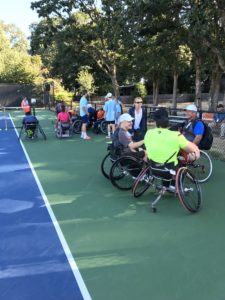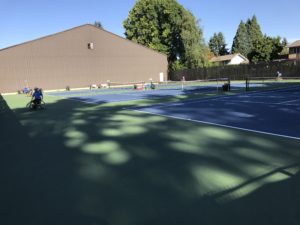Serena’s Meltdown 2018 US Open
Serena Williams, one of the greats in tennis, had a meltdown at the US Open tennis championships September 8th, 2018. To read a factual account of her meltdown, go here: ttps://ftw.usatoday.com/2018/09/serena-williams-has-another-u-s-open-meltdown-clashes-with-chair-umpire.
This again draws attention to sports officials, not just in tennis, but in all sports. It isn’t only tennis players that approach their sport with passion, objectivity and subjectiveness. Officials do also, which begs the question: why have officials?
Officials
Rules are made to be broken. Have you ever heard that phrase? Of course.
Every sport has officials who enforce the rules of the sport they are certified in. The rules of the sport are made by the governing body of that sport. If you want to change the rules, let the governing bodies do that. Otherwise, officials will enforce the present rules to the best of their ability that day, just as players play to the best of their ability on that day.
In tennis, anyone who desires to be an ITF official, especially at the pro level, has to go through many certification exams (in my opinion you need a psychiatric exam to want to be one-lol). To achieve that level of chair umpiring, many hours and years of experience and evaluation go into it as well. Even with all this, officials are human, just as players are. Officials, while trained to be objectively fair and professional in their umpiring, also have good days and bad.
In this case of Serena’s meltdown, Carlos Ramos was having a good day. He implemented the proper penalties at the proper time. On the first code violation, a warning, he saw Serena and her coach(Patrick Mouratoglou) have eye to eye contact, where he motioned her to go forward to the net (verified by synced cameras, after the fact). Coaching is a rule violation at the US Open.
Ramos is known by all the players as an official who follows the letter of the rules. The second code violation requires a point to be given to Osaka. It is also a clear rule violation when a player volitionally breaks their racket in the course of play through a loss of controlled emotion.
For the third code violation, Ramos gave Serena the benefit of the doubt on a couple of changeovers (where she continuously berated him – the cameras didn’t show those), before he (Ramos), gave her a third code violation, which meant awarding a game to Osaka. In no other sport are the players allowed to bad mouth the official on a personal level. You can disagree with them, strongly, but don’t go to the personal level of calling an official a liar, or a thief. Players are penalized, or ejected in other sports for much less.
Ramos is known as a ‘rules’ official. It begs the question: why would the chief umpire, or referee, knowing this, put Ramos in charge of a high profile match like this one?
Officials are needed to insure fair and continuous play. Are there ‘bad’ officials? Sure, some, just as there are some ‘bad’ players. They all become known over time and have career consequences they bring on themselves.
Code violations are awarded only in extreme situations. They escalate in importance: warning, point, game, default. They escalate in order to give the player(s) notice they (the player) are becoming emotionally unstable and need to gain control of their actions for the betterment of their performance, and to exhibit good sportsmanship to their opponent. Officials are needed to ensure this.
Players – Own It
The bottom line with Serena Williams on that day? She was losing. To her credit, it didn’t mean she was going to lose the match, as Serena has come back many a time to win matches it looked like she would lose. However, her opponent, Naomi Osaka, was playing well. It was not the time for Serena to lose emotional control. Once the initial warning was given to Williams, she, of all players, knew Ramos’s reputation as a stickler for the rules. She should have ‘owned’ her warning and focused on playing the best tennis she could, that day. It would have been helpful if Ramos would have gone the extra verbal ‘yard’ and assured Serena the penalty was her coaches and not her own, but she had to own the code violation that came with it. Instead the brilliant play of her opponent brought out negative emotion, instead of positive, which, hopefully, Serena could have applied to upping her performance level to match Osaka’s.
Carlos Ramos has a passion to be the best official he can be. Serena Williams and Naomi Osaka have a passion to be the best tennis players they can be. All are subject to their ability to do the best they can. On each day, they expend the passion for what they do.
In the trophy acceptance ceremony Serena did try to redeem herself, but with difficulty. It brought up the gender bias question, which you can read more about here.
Conclusion
Rules of the sport, officials, players, objective, subjective, good, bad, indifferent: what is your take on the performance of Serena Williams, or Carlos Ramos? The winner out of all of it seems to be Naomi Osaka, 2018 US Open Champion.




